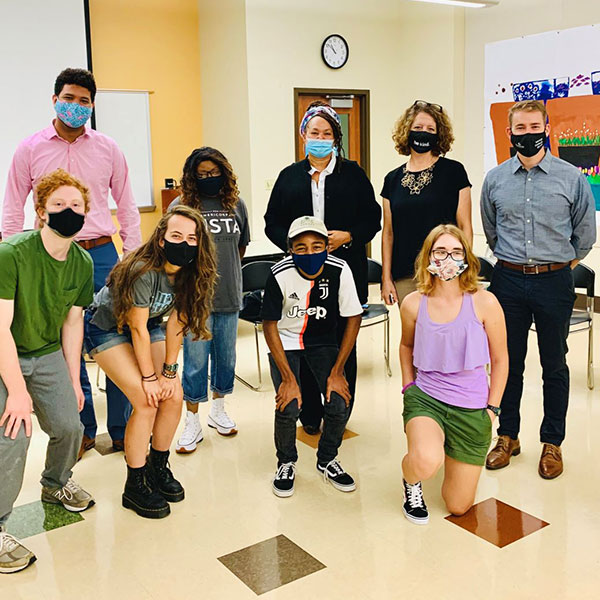‘Green is Good for Us,’ Says Green Building Council
YouthBridge partners with community organizations to build endowment funds that support their long-term sustainability. This month, we feature the Green Building Council and the work they do in schools.
Emily Andrews is concerned with the future of the planet for the sake of the humans that occupy it. “We’re really talking about the future of us,” she says. Dedicating her career to environmental protection, she has spent the last 15 years serving as Executive Director of the Missouri Gateway Chapter of the U.S. Green Building Council.
Organized first as the St. Louis Regional Chapter of the national U.S. Green Building Council in 2001, it later merged with the Missouri Heartland Chapter to create a regional chapter covering St. Louis; eastern, central and southwestern Missouri; and Southern Illinois. The chapter is funded by its members, individual donors, many in the local building industry – most significantly, Alberici – foundations, trade unions and others. It also has established an endowment fund through YouthBridge, which Andrews says has given the chapter greater financial diversity, flexibility and a higher return than other investment vehicles. “And with YouthBridge, it’s been completely smooth and seamless,” she says.
The focus of the chapter is on creating and restoring buildings to healthy and environmentally responsible spaces. “The average person spends 90% of their time indoors, and many illnesses and chronic diseases – even our cognitive functioning – can be tied back to the environments where we live, work and learn,” says Andrews. The pandemic has made everyone “acutely aware of air quality and how unhealthy some of our buildings really are,” she adds.
Additionally, Andrews says buildings generate about 40% of greenhouse gases in the US. “There are steps everyone can take, and we’re here to help businesses, schools and building owners in being successful with their efforts, while balancing all of their other responsibilities.”
The mission of the chapter is carried out through the work of several committees that educate, advocate, provide tools and seek out partnerships with community leaders and those in the building industry. A significant portion of work is dedicated to promoting green and healthy schools. Through the Green Schools Quest Committee, K-12 schools are paired up with a volunteer mentor to guide them in sustainability projects.
“These projects are all student-driven – what they would like to see happen in their schools – measured and submitted for potential prizes,” says Andrews. Projects have concentrated on such areas as recycling, composting, energy use, even weatherization, which the students of Jennings High School took on because they were “tired of cold classrooms,” she says.
The chapter also is involved in a joint project with the Missouri Environmental Education Association – Missouri Green Schools – aimed at providing resources for PreK-12th grade schools to set and track environmental, health and sustainability education goals. In 2020, Missouri Green Schools also began a state-level recognition program based on the “three pillars” of green schools: reduced environmental impact and costs; improved health and wellness of schools, students and staff; and effective environmental and sustainability education.
“Working in the schools space has been so amazing and has the potential to be transformative,” says Andrews, adding that the chapter has supported nearly 200 schools in the region to date.
She is equally encouraged by the strong commitment of the City of St. Louis to climate protection efforts and is excited to be partnering with the City and others on a new Building Energy Exchange-St. Louis. This initiative will support building owners that have to comply with the City’s new Building Energy Performance standards and help the local building community in overcoming barriers to energy efficiency.
If you would like to donate or have any questions about this organization, please contact Allison McDonald.
